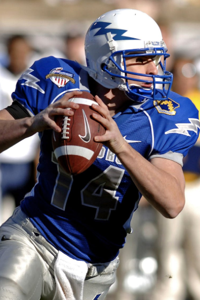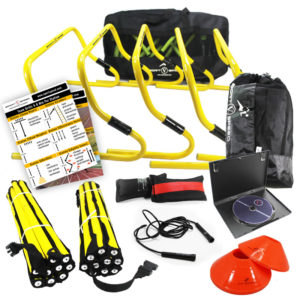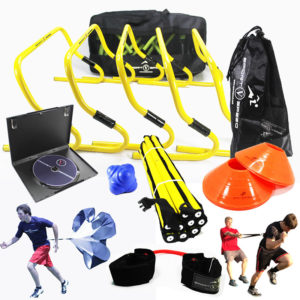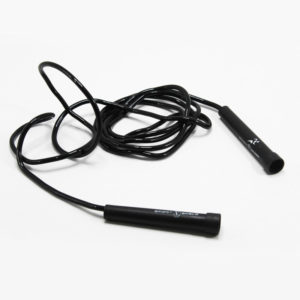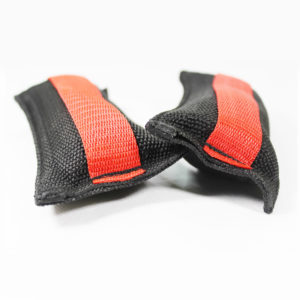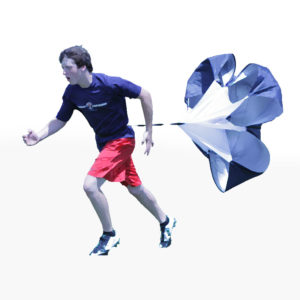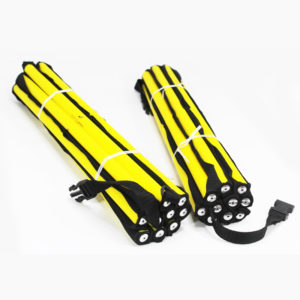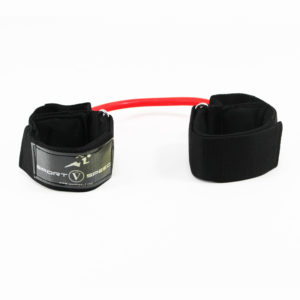Football
AMERICAN FOOTBALL: MORE THAN JUST BRUTE FORCE
Heads down, adrenaline pumping, eyes focused, sweat flowing down freely, all muscles tense—in a snap, all hell breaks loose. Helmets clash, bodies fall, movements everywhere, groans and grunts fill the field.
Such is the intensity of American football—a grueling and physically demanding sport that requires more than just brute force. Speed in American football is an essential skill required of each player. Speed is not limited to sprinting—players need to quickly respond physically and mentally to any game situation.
A wide receiver must be able to outrun the safety, receive a long pass, and score a touchdown. A running back must be quick on his feet to punch a hole in the defense while carrying the ball. He may even be required to run the whole field to score a touchdown if given the opportunity.
In the meantime, all other players must be quick and agile to tackle, block, or defend the quarterback or the field against the offense.
Speed and Agility Drills for American Football
American football speed workouts are designed to train players to be quick on their feet. Without this training, moving quickly will be impossible because of their bulk. The idea behind football speed drills is to condition the muscles of the legs and calves to spring into action at any given time.
Cone Drills
One of the best American football speed and agility training is the X-drill. It simulates game situations wherein a player needs to move in different directions. Using four cones as markers arranged to form a square, the player moves from one cone to another using different foot movement: running, shuffling, crossing over, and sprinting. Adaptability to changes in direction, footwork, and angle of attack are the essential skills developed using this football speed drill.
There are other variations of speed and agility drills for American football using cones, all with the intent of developing players’ instant reflex and flexibility of movement
Sprinting
Running short distances at breakneck speed is another way of training to develop speed essential to becoming a great football player. The forty-yard dash is the yardstick of performance used in American football. This performance measure was first used by the Dallas Cowboys in the 1960s to choose prospects that they would send to training camp. Since then, NFL teams have used 40-yard sprint as a gauge of speed in American football.
Speed training for football adapts training methods of track-and-field simulating quick start from the block. Other variations focus on stride and the use of the balls of the feet to gain maximum coverage. Successive short sprints also help develop players’ ability to cover great distances in a short period of time. The use of a variety of American football speed and agility equipment further enhances the player’s ability to cover long or short distances in record-breaking speed.
Footwork and Balance
Football players must have the ability to change pace and direction without losing their balance. This is important especially for wide receivers who need to run down the field while looking back to catch the long pass from the quarterback. Defensive players also need to have perfect balance so that they can stand their ground without being toppled to the ground. The right kind of football speed and agility drills help players stay poised in spite of the onslaught from the opponent.
American football speed and agility training helps to develop players become more well-rounded. Furthermore, it keeps them away from injury because their muscles are prepared for the grueling demands of the game. With proper football speed and agility drills and equipment, they’ll be able to withstand the physical and mental pressure of the whole football season and beyond.

